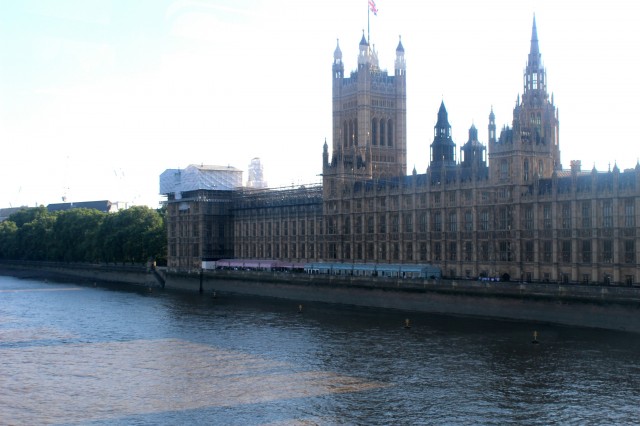It is with great regret that we report the death of Professor John Hibbs, Founder and President of the Roads & Road Transport History Association. An appreciation will appear in the Journal and on the web site.
Tag Archives: Roads and Road Transport History Association
Truck Drivers Christmas Crisis …
The Times letters, 5 November 2014
Sir, The UK’s road transport and logistics industry is in desperate need of 45,000 new truck drivers. This shortage already affects 70 per cent of logistics providers and most others expect to be affected soon.
The issue is fast becoming significant: unless urgent action is taken by the government and the industry as a whole, shoppers could be facing empty shelves, if not this Christmas, then next.
We are asking George Osborne to use his autumn statement on December 3 to announce national funding to help UK residents to gain their LGV driving licence and certificate of professional competence. The UK’s economy is improving but it’s up to the road transport industry to ensure that the supply chain keeps moving.
Richard Burnett, chief executive, Road Haulage Association;
Steve Agg, chief executive, Chartered Institute of Logistics and Transport; Steve Hobson, editor, Motor Transport
It’s the end of the road if black cabs don’t wise … up
The Times, 5 November 2014, Matthew Parris
Two smartphones. Two cabs. One destination. Last Wednesday my partner and I were dining with his brother and wife in London. After dinner we wanted to go east and they west. Each brother grabbed his phone and ordered an Uber car. On each screen, the nearest car was 1.2 miles away. Sibling rivalry kicked in. Fight! Fight!
Everyone crowded round the smartphone screens to watch the two car icons moving across the Google map, in an unwitting race for our address. There were air-punches and cries of “Yes!” from our challengers when our car took a wrong turning and had to reverse. But still we won. Yes!
Uber is the biggest thing in public transport for years, as important as HS2. Quite soon taxis cruising the streets opportunistically will be history; you won’t ring a minicab company for a car; and the car taking you to the airport will not return empty. Huge networks of drivers and virtual networks of passengers will use IT to get the nearest car to the customer, paid on account. The gains in efficiency and convenience are irresistible.
Black cabs must adapt or die, but will not adapt and will die. “Most”, said the historian Leopold von Ranke of human institutions, “see their ruin before their eyes; but they go on into it.” London cabbies are campaigning against Uber and Berlin has banned it, but resistance is doomed. If you know any young person studying to take the Knowledge and become a black-cab driver, please, please warn them.
How safe is cycling? …
www.bbc.co.uk/news/magazine-29878233, 4 November 2014
Cycling is often perceived as dangerous, but how much have the risks of riding a bike changed, and how do they compare with driving a car, asks statistician Jamie Jenkins.
There has been a huge fall in the number of deaths among cyclists in the past 80 years.
The figure reached its peak in 1934, when 1,536 pedal cyclists died in Great Britain. Last year there were 109 fatalities, according to the Department for Transport (DFT), and it’s important to remember that there were considerably fewer people living in the country 80 years ago.

But before we think that 1934 was a bad year for cycling, remember that despite the lower population there are likely to have been far more cyclists. Owning a motor vehicle was much rarer and thus cycling as a primary means of transport would have been more common.
We do not know exactly how many cyclists there were in 1934, and indeed the figures today are pretty sketchy, but the number of cars on the road is considered to be a pretty good indicator. In 1934 there were fewer than two million cars on Britain’s roads, while today there are about 28 million licensed cars.

So how safe is it to cycle on Britain’s roads in 2014?
There are several ways to look at the risk of a death, based on, for example, the distance travelled, the number of journeys made or the amount of time spent travelling. These can be found in a DFT report from last year.
Starting with distance travelled, a cyclist travelling a mile in Great Britain is 15 times more likely to have a fatal accident than a car driver going the same distance. While this sounds alarming, the risk from death for both forms of travel is quite low.
In 2013 there was one death for every 29 million miles cycled, so you would expect one death for every 29,000 people who cycled the whole length of Britain.
But cycling a certain distance generally takes longer than it would take in a car, so over the same trip there is greater exposure to an accident for a cyclist. Based on the time spent travelling, a cyclist is five times more likely to have a fatal accident than a car driver.
Pedal cycle fatalities are falling at a time when cycle traffic is rising – road traffic estimates put cycle traffic in 2013 around 13% higher than the average over 2005-09, with deaths 16% lower.

But while a fall in fatalities is good news, there have been increases in recent years in the number of cyclists who have been seriously injured. In 2013 serious injuries were 31% higher than the average over 2005-09.
It is possible that falling deaths and rising serious injuries could be a result of lives being saved by the healthcare system, for example, with the use of specialist trauma centres.
An important factor in the likelihood of being seriously injured or a fatality is the type of road where an accident occurs. Rural roads carry 30% of cycle traffic but they accounted for 58% of pedal cyclist fatalities in 2013.

The Department for Transport puts this discrepancy down to traffic speed. Rural roads have much higher average speeds than urban roads and the extra speed leads to worse accidents for cyclists. But another factor could be that it takes ambulances longer to reach accidents in more remote areas.
So cyclists do have a greater risk of death than car drivers, and they are more likely to die on a rural road than in a city, but their overall risk of death is low.
It’s worth bearing in mind that the statistics show they need to be extra careful around heavy goods vehicles. Between 2009 and 2013, HGVs were involved in around a quarter of cyclist deaths despite comprising only 5% of traffic in Great Britain.
Swansea to Mametz classic car run, July 2016 …
SWANSEA to MAMETZ (The Somme, France) 5th – 8th JULY, 2016.
An opportunity to join 100 British classic cars in a journey from Swansea to Mametz, France, to commemorate the Battle of Mametz Woods, a First Word War Battle in the Somme, France.
Between 7th – 12th July 1916, 3500+ Welsh casualties were recorded following the “Battle of Mametz Woods” with over 1000 Welsh soldiers having sacrificed their lives in a prolonged battle to capture the Mametz Woods from the German army.
Full details in the Mametz leaflet.
London Transport Museum symposia …
As part of Transport for London’s Year of the Bus celebrations in 2014 London Transport Museum is holding a symposium called The Social History and Cultural Significance of the London Bus on Saturday 18th October. Our speakers will look at the iconic nature of London’s red double-decker buses, their social history, economic impact and cultural significance.
Further, to mark the centenary of the outbreak of the First World War, and in support of our current exhibition Goodbye Piccadilly, we are holding another symposium, 1914-1918 From Home Front to Western Front on Saturday 15th November. This will investigate the central themes of the exhibition; wartime and peacetime conditions in London, women in London transport and the role of the B-type bus on the Western Front, in more detail.
Transport Direct closes today – last chance to plan a journey …
From the Universities Transport Study Group mailing list, UTSG@JISCMAIL.AC.UK, posted by Glenn Lyons.
You may already be aware but at midnight today the multi-modal door-to-door journey planner Transport Direct closes down after 10 years of service. Transport Direct was a vision back in the early days of the web – before Google became involved in journey planning – that the Labour Government committed to in its 2000 Ten Year Plan for transport. The service launched in 2004 and by 2012 had handled over 110 million enquiries with over 378,000 enquiries then being handled per week. In the two years since the level of use has continued to increase. Transport Direct was a world first in what it delivered and many other countries took interest in learning from its approach. In 2012 the Olympic Delivery Authority selected Transport Direct to develop a bespoke online portal to guide event ticket holders to and from the Olympic venues. The Spectator Journey Planner had 2.75 million unique users.
Today is your last chance to use a piece of ‘integrated transport history’ and plan a journey: http://www.transportdirect.info/
After today, going to this link will instead point you to a number of other services in the travel information marketplace that together can be used as a substitute for Transport Direct. Transport Direct Closedown Letter
Farewell old friend!
Glen
Looming London transport crisis ‘risks sparking riots’, says TfL chief …
The Guardian 21 September, Gwyn Topham, transport correspondent.
London could see riots again unless more trains and buses are provided at affordable fares for the poorest communities as the population soars, the city’s transport commissioner has warned.
He said the city will face “overwhelming” overcrowding on its congested transport networks by 2030 without urgent progress on new rail lines.
Despite an annual investment of about £1bn in tube upgrades and the £14.8bn spent building Crossrail, a rapidly expanding population means an additional 6m trips will be made in the capital each day by the end of the next decade, swallowing up the new capacity on public transport.
In an interview with the Guardian, Sir Peter Hendy, head of Transport for London, said low-paid workers now lived on the outskirts of the capital rather than in inner-city neighbourhoods, and that there could be “social unrest” if they could not easily commute around the city for work.
“London’s poor don’t live in Harrow Road, they live in Enfield and Tolworth and if you can’t get them to jobs they want, your city’s going to be in a bad way: it’s not going to progress and contribute to national economic growth,” Hendy said. “The stakes are pretty high. If you’re not able to increase transport capacity, and people find accessing work impossible, you risk social unrest. You can expect trouble.”
Bus fares have risen by more than 50% in six years under the London mayor, Boris Johnson – a policy Hendy has backed. But the transport commissioner he warned fares could not continue to rise. “The bus network is the staple of outer London. We’re going to need more revenue funding. Otherwise we’re going to leave people behind. When you start leaving people behind, you start saying to people in London they may not be able to get to work on time and when that happens, you damage the economy quite severely.”
Hendy also warned that unless major infrastructure projects, such as Crossrail 2, were started and new rail lines were built, overcrowding in central London would be “overwhelming”. Transport chiefs say it will take at least 15 years to build Crossrail 2.
“You just won’t be able to get into or on to many of our transport networks at peak times if you don’t start [these infrastructure projects] now. When Crossrail opens, it will be full within months; the population will go on towards 10 million and you’ll soon need Crossrail 2. You won’t be able to do without it. In central London the overcrowding will grow to be overwhelming.”
London’s population is officially estimated at 8.4 million and is rising by about 80,000 people a year. It is expected to reach 10 million by 2030. “If you contemplate a London in 2030 without continuous investment and more revenue money, we will have the kind of congestion you’re looking at in Mumbai,” he said.
Mumbai was one of several Indian cities that experienced protests over rail fare increases earlier this year, while more than a year of escalating demonstrations in Brazilian cities in the runup to the 2014 World Cup were ignited by fare rises on public transport.
While the completed Crossrail, a revitalised Thameslink line and tube upgrades will bring great leaps in capacity in the next five years, transport chiefs are struggling to keep up with passenger numbers, which have risen by a third on the tube in the past 10 years. The underground ran more services and carried more customers than ever before in 2013-14, with a record 1.265 billion passengers.
The capital’s growth was putting pressure in places that “people never expected”, Hendy said. “I’ve been a strong advocate of putting fares up a lot in an era of declining government funding. But if the poor are not living in Tower Hamlets, Stockwell, Hackney and Southwark any more and all the places where people on low incomes used to live, they are living a long way away and a future mayor is going to have to make sure they can afford to get to work.”
The chancellor, George Osborne, cut funding for day-to-day operations in London by 25% in the last spending review, meaning fares are likely to rise in coming years. Hendy and TfL will be joining with counterparts in Transport for Greater Manchester in the coming weeks to push for greater powers over revenue and spending for cities. Hendy said TfL was already unable to match the rising demand for buses. “The choice as we look forward is not whether people come to London, but if you have enough revenue to cope with them and whether the people who do the poorer paying jobs can access them.
“In 2016, unless there is more money we will start leaving people behind. We’ve had a 1-2% increase in mileage every year with a fairly substantial reduction in subsidy. The growth in bus demand has far outstripped the mileage because we haven’t had the money.”
Transport chiefs believe pressure on road space is likely to be even more intense than on the rail and tube network.
Michele Dix, director of planning for TfL, said: “We’ll have to manage it radically better or provide new space. We’re looking at more of the space being in tunnels – putting certain vehicles underground. We don’t want to generate more traffic. As many people we can get to walk, cycle or use public transport we will.”
Dix said road tunnel schemes, primarily designed for freight vehicles and deliveries, were an option TfL was considering. One proposal for a 22-mile inner orbital tunnel has been published, including subterranean dual carriageways, although Hendy said the timescale for completion was likely to be decades.
Dix said any such schemes would be tightly controlled to deter a rise in private car use. Both TfL and independent transport experts argue that increased charging for road access seems inevitable.
Roger Atkinson in The Oldie! …
An abbreviated version of Roger’s ‘Teaching the grandchildren to use buses’ from Journal 75 is in the September 2014 Oldie.
Afternoon Tea Bus Tour …
BB Bakery Afternoon Tea Bus Tour
Chocablog, 12 August 2014
In case you hadn’t heard, it’s National Afternoon Tea Week here in the UK and we’ve been celebrating in style with an afternoon tea with a difference! Covent Garden based BB Bakery recently bought an old Routemaster double decker bus and converted it into a rather fun venue for afternoon tea – a venue that moves!
As you enjoy your afternoon tea, the BB Bus tours some of London’s famous landmarks, making other commuters with their old-fashioned non-afternoon-tea transportation very jealous indeed!
Of course, eating and drinking in a moving vehicle does present challenges, so this is a little different from the average afternoon tea. Freshly squeezed orange juice comes in little bottles with lids and the tea itself is served in ceramic versions of takeaway coffee cups with rubber lids. The cups fit neatly into recessed cup holders in the tables and (mostly) keep everything quite secure. We did encounter one or two challenging “bumps” in the road, but that was really all part of the fun.
The food was very pleasant, with most of the meal laid out beforehand (being a waiter on a moving bus is another callenge!). There were little sandwiches, savouries and a nice selection of sweet treats to go with the tea, including this tempting little chocolate tart.
But of course, the best part of the experience is watching London go buy while you sit in comfort. There can’t be many afternoon teas where you get constantly changing views like this!
I had a fantastic time on the bus, but there were a few minor issues with it that I’m sure the BB team can resolve in time.
The biggest of those was with the tea. A selection of Tea Pigs teabags was available, which are Ok, but not the greatest teas in the world. A bigger problem was with the cups themselves. Drinking tea through a mug with a rubber lid isn’t a great experience and ends up just making the tea taste of rubber. Milk was presented in those little UHT cartons, so I opted to have mine black and risk drinking it without the lid.
I would have also liked to have had some form of commentary on the tour itself. I like the fact that we were mostly left in peace to eat and chat, but it would have been great to have a few landmarks pointed out.
That aside, the Afternoon Tea Bus Tour is a thoroughly enjoyable experience. By it’s nature, it’s not the most refined afternoon tea experience, but shared with a group it’s a whole lot of fun. The challenge of eating and drinking while moving becomes part of the entertainment.
The BB Bakery Afternoon Tea Bus Tour costs £45 per person. Thanks to AfternoonTea.co.uk for arranging this press trip and organising National Afternoon Tea Week!






